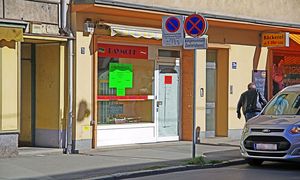
Volcano trekking blends raw geology with high-altitude hiking, delivering sunrise craters, black-sand ridges, and the low rumble of a living planet. This guide covers where to go, how to prepare, and how to tread lightly around both active and dormant giants.
Why Volcano Treks?
Volcanoes reshape landscapes in dramatic strokes—lava flows, ash fields, and mineral-rich soils that turn slopes into wildflower canvases. A trek here is more than a hike: it’s a live lesson in plate tectonics, climate, and culture. From sacred summits to crater rims, you’ll experience:
- Geology up close: Solidified lava tubes, fumaroles, and crater lakes.
- Iconic sunrise viewpoints: Volcanic silhouettes layered against the horizon.
- Cultural connections: Many volcanoes are woven into local myth, ritual, and livelihood.
Top Volcano Trek Destinations
Mount Etna, Sicily (Italy)
Europe’s most active volcano offers lava fields, alpine-like forests, and frequent summit restrictions that keep routes dynamic. Typical treks range from cable-car-assisted hikes to full-day crater rim ambitions with certified guides.
- Highlights: Moonlike lava deserts, hornitos, panoramic views to the Ionian Sea.
- Skill level: Easy to moderate; altitude and loose scree can be taxing.
- Tip: Winds turn fast—pack layers and eye protection against ash.
Mount Bromo, East Java (Indonesia)
Famous for dawn vistas from Penanjakan and the Sea of Sand approach to Bromo’s steaming crater. Often paired with Semeru (Java’s highest peak) for multi-day adventures.
- Highlights: Ethereal sunrise ridge, vast caldera plains, Tengger culture.
- Skill level: Easy to moderate; mostly short ascents with sandy footing.
- Tip: Dust masks help on the ash flats; a headlamp is essential for pre-dawn starts.
Pacaya, Guatemala
A classic introductory volcano hike near Antigua. Trails traverse recent lava fields with occasional heat vents; conditions vary based on current activity and access rules.
- Highlights: Textured lava terrain, views to Agua and Fuego.
- Skill level: Beginner-friendly with local guides widely available.
- Tip: Trekking poles make the descent on loose slag much easier.
Kīlauea, Hawaiʻi (USA)
Within Hawaiʻi Volcanoes National Park, trails cross old flows, native rainforest, and steaming ground. Lava displays are intermittent; the park reroutes access for safety.
- Highlights: Crater vistas, Thurston Lava Tube, unique flora.
- Skill level: Easy to moderate; heat, sun, and sharp pāhoehoe require care.
- Tip: Footwear with rigid soles protects from jagged lava textures.
Villarrica, Chile
An iconic cone above Pucón. Summit days can include crampon work on glacier sections, and access depends on current volcanic alert levels.
- Highlights: Snow-and-ash scenery, occasional lava glow at depth, views of the Lake District.
- Skill level: Moderate to strenuous; often guided with technical equipment.
- Tip: Verify if ice axe/crampons are required in your season.
Stromboli, Aeolian Islands (Italy)
Nicknamed the “Lighthouse of the Mediterranean,” Stromboli’s persistent activity means carefully managed trails and mandatory guides for upper slopes.
- Highlights: Nighttime glow from the Sciara del Fuoco, coastal village charm.
- Skill level: Moderate; heat and ash can be intense.
- Tip: Evening hikes maximize the chance of seeing incandescent bursts—when allowed.
Tongariro Alpine Crossing, New Zealand
A world-class day hike across a volcanic plateau of red craters and turquoise lakes. Weather is the main challenge; plan for alpine conditions.
- Highlights: Emerald Lakes, Red Crater, expansive North Island views.
- Skill level: Moderate; long distance with exposed sections.
- Tip: Shuttle logistics are common—book transport early in peak season.
Reykjanes Peninsula Volcanoes, Iceland
Recent eruptive phases have opened hiking routes when conditions allow. Trails are re-marked frequently; heed closures and gas warnings.
- Highlights: Fresh lava fields, coastal cliffs, geothermal landscapes.
- Skill level: Moderate; uneven lava, wind, and weather shifts.
- Tip: Gas can pool in low areas—respect signage and stay upwind.
Safety & Ethics
Core Safety Rules
- Check official advisories: Park services and civil protection agencies issue alerts that override tour ads and blogs.
- Use certified guides where required or advisable, especially on active cones or glacier-covered peaks.
- Mind volcanic gases: Sulfur dioxide and other gases can irritate lungs and eyes. If you feel unwell, retreat to clean air immediately.
- Respect exclusion zones: Barriers exist for a reason—crust can be thin near recent flows and vents.
- Footing first: Scree, cinders, and aʼā lava are unstable. Keep spacing in your group to avoid rockfall.
- Insurance & contingency: Confirm that your travel insurance covers volcanic areas and high-altitude trekking.
Essential Gear Checklist
- Sturdy hiking boots with aggressive tread (scree + sharp lava)
- Trekking poles (helpful on sand and cinder descents)
- Helmet (recommended on loose, steeper routes)
- Lightweight gloves (protection from abrasive rock)
- Layering system: moisture-wicking base, insulating mid, windproof shell
- Hat, sunglasses, and high-SPF sunscreen
- Buff or particulate mask for dust/ash; gas-rated respirators only when required and advised
- Headlamp (pre-dawn starts) + spare batteries
- 2–3 liters of water per person; electrolytes for hot climbs
- High-energy snacks; compact emergency rations
- Navigation: GPX on phone + offline map; power bank
- Small first-aid kit (blister care, eye drops)
When to Go
Seasonality hinges on weather, snow cover, and alert levels:
- Mediterranean (Etna, Stromboli): Late spring to early autumn offers stable weather; midsummer can be hot.
- Tropics (Guatemala, Indonesia): Dry seasons typically mean better visibility and trail conditions; rain makes ash slopes slippery.
- High latitudes (Iceland, Chile south): Windows of stable weather are shorter—watch wind forecasts and daylight hours.
Active eruptions may open or close areas abruptly—build flexibility into your plan.
Training & Fitness
Most volcano treks demand steady cardio, tolerance for altitude, and strong ankles for uneven ground. Prepare 6–8 weeks ahead:
- Endurance: 3× per week brisk hikes or runs (45–60 min).
- Strength: Step-ups, lunges, and loaded carries for legs and core.
- Downhill control: Practice long descents; volcanoes often require careful, sustained downhills on cinders.
- Pole technique: Train with trekking poles to save knees on scree.
Sample Itineraries
3-Day Intro Trek: Bromo & Tengger Caldera (Indonesia)
- Day 1: Arrive Cemoro Lawang; sunset viewpoint recon; early sleep.
- Day 2: Pre-dawn jeep to Penanjakan; hike across Sea of Sand to Bromo crater rim; afternoon rest or local village walk.
- Day 3: Optional hike to King Kong Hill; transfer out.
5-Day Sicilian Volcano Sampler: Etna & Stromboli
- Day 1: Catania to Etna Sud; acclimatization hike on lava fields.
- Day 2: Guided ascent toward summit area if permitted; explore lava tubes.
- Day 3: Transfer to Milazzo; ferry to Stromboli.
- Day 4: Evening guided hike to permitted viewpoint zones.
- Day 5: Morning coastal walk; ferry and departure.
7-Day Pacific Rim Taster: Guatemala
- Day 1: Arrive Antigua; gear check.
- Day 2: Pacaya day hike on lava fields.
- Day 3–4: Overnight Acatenango (if conditions allow) for views toward Fuego.
- Day 5: Recovery & culture day.
- Day 6: Lake Atitlán volcano viewpoints.
- Day 7: Buffer/exit.
Photography Tips (Without Melting Your Gear)
- Lens choice: A 24–70mm covers most scenes; add a lightweight telephoto for distant crater activity.
- Stability: A compact tripod helps for blue-hour crater shots; avoid setting it on hot ground.
- Safety first: Never cross barriers for a shot. Heat and gases can spike quickly.
- Filters: UV/protective filters guard glass from ash; carry a blower and microfiber cloth.
- Night attempts: Learn manual settings (e.g.,
ISO 1600,f/2.8–4,5–15s) and test away from fumes.
FAQs
Do I need a guide?
For many active volcanoes, yes—either required by regulation or strongly recommended for route-finding, gas assessment, and rapid decision-making.
How close can I get to lava?
Only as close as authorities allow. Fresh crust can hide extreme heat and unstable voids. Follow posted distances and guide instructions.
Is it safe to hike with kids?
Choose dormant or well-managed sites with short distances and minimal hazards, and avoid areas with gas advisories or steep scree.
What about altitude?
Some volcanoes exceed 3,000 m. Acclimatize gradually, hydrate, and know the signs of altitude sickness. Turn back if symptoms worsen.
Quick Planner
- Permits: Check park websites 2–4 weeks out.
- Windows: Aim for shoulder seasons to balance weather and crowding.
- Backups: Have alternative hikes ready in case of closures.
- Local knowledge: Rangers and certified guides are your best, freshest source.






Kommentare (5)
Kommentierenvor 5 Stunden
Typisch
für Politiker, Verantwortung auf die Eltern abschieben
vor 7 Stunden
14-15 Jährige
können bis 1h früh in Raucherlokalen( über 90% der Gaststätte sind nicht rauchfrei) ihre ersten Zigaretten ausprobieren, kontrollieren wird das sicher niemand.
vor 6 Stunden
Die
können das auch in der Schule am oder abseits des Pausenhofs machen. Dazu braucht es sicher keine verlängerte Fortgehzeit.
vor 8 Stunden
„Was macht ein 14-Jähriger um 22 Uhr am Jakominiplatz?“
Er kann auf die Bim warten nach dem Kino. Und es geht eigentlich auch niemanden was, was ein Jugendlicher um die Zeit x am Ort y macht, wenn er gegen kein Gesetz verstößt.
vor 9 Stunden
Augehzeiten - Verantwortlichkeit der Eltern
Im Grunde bilden die im Gesetz niedergeschriebenen Ausgehzeiten einen Maximalrahmen, den die Eltern individuell kürzer ansetzen können (was oft sicher nicht schaden würde). Leider haben viele Eltern bei den Jugendlichen "nichts zu melden" - und bevor viel diskutiert wird wirds geduldet.
Traurig nur, wenn sich Eltern beschweren kommen, wie zB. bei einer Ballveranstaltung in Kärnten, weil eine 14-Jährige ohne Aufsichtsperson nicht eingelassen wird. Laut Gesetz wäre es ja erlaubt. Hoffentlich wird dann auch alles klarer ausformuliert, damit viele Diskussionen ausbleiben (Aufsichtsperson usw.).